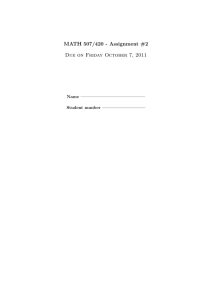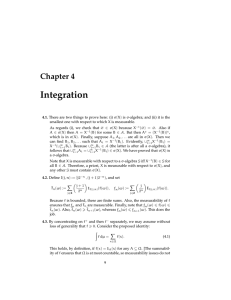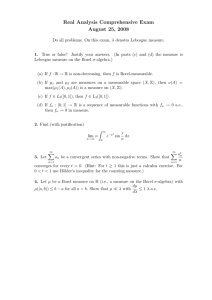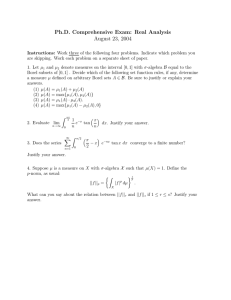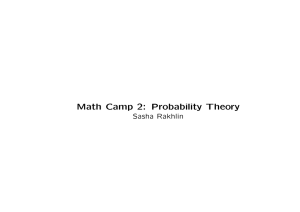221 Analysis 2, 2008–09 Exercise sheet 2 Due February 23rd 2009
advertisement
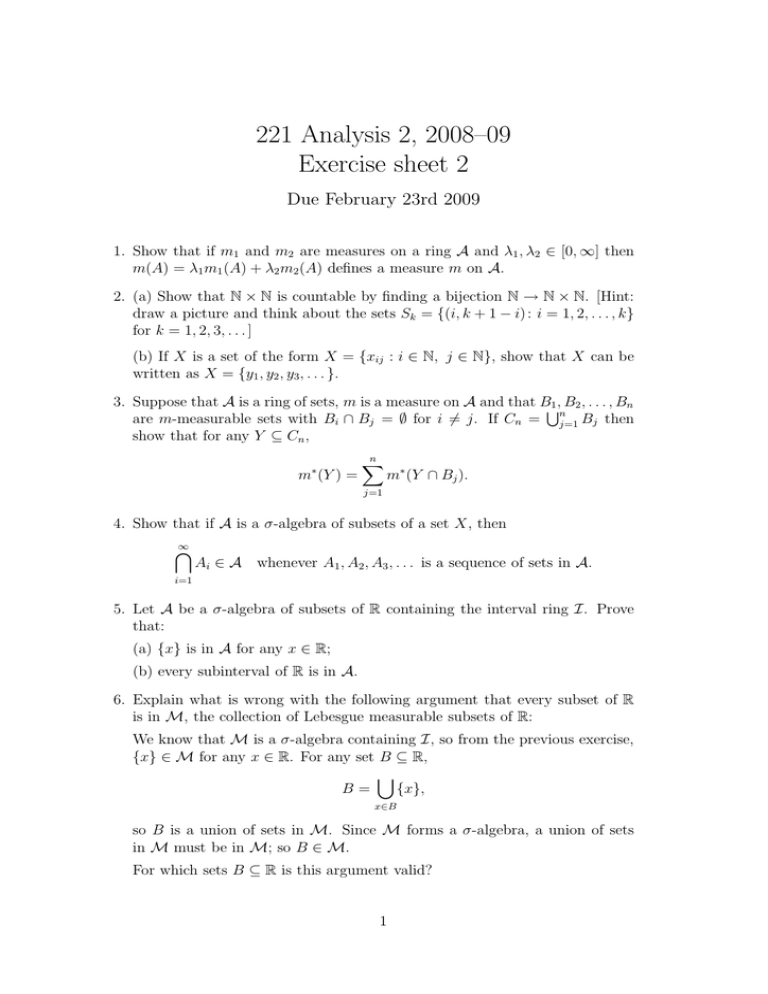
221 Analysis 2, 2008–09
Exercise sheet 2
Due February 23rd 2009
1. Show that if m1 and m2 are measures on a ring A and λ1 , λ2 ∈ [0, ∞] then
m(A) = λ1 m1 (A) + λ2 m2 (A) defines a measure m on A.
2. (a) Show that N × N is countable by finding a bijection N → N × N. [Hint:
draw a picture and think about the sets Sk = {(i, k + 1 − i) : i = 1, 2, . . . , k}
for k = 1, 2, 3, . . . ]
(b) If X is a set of the form X = {xij : i ∈ N, j ∈ N}, show that X can be
written as X = {y1, y2 , y3 , . . . }.
3. Suppose that A is a ring of sets, m is a measure on A and that BS
1 , B2 , . . . , Bn
are m-measurable sets with Bi ∩ Bj = ∅ for i 6= j. If Cn = nj=1 Bj then
show that for any Y ⊆ Cn ,
∗
m (Y ) =
n
X
m∗ (Y ∩ Bj ).
j=1
4. Show that if A is a σ-algebra of subsets of a set X, then
∞
\
Ai ∈ A whenever A1 , A2 , A3 , . . . is a sequence of sets in A.
i=1
5. Let A be a σ-algebra of subsets of R containing the interval ring I. Prove
that:
(a) {x} is in A for any x ∈ R;
(b) every subinterval of R is in A.
6. Explain what is wrong with the following argument that every subset of R
is in M, the collection of Lebesgue measurable subsets of R:
We know that M is a σ-algebra containing I, so from the previous exercise,
{x} ∈ M for any x ∈ R. For any set B ⊆ R,
[
B=
{x},
x∈B
so B is a union of sets in M. Since M forms a σ-algebra, a union of sets
in M must be in M; so B ∈ M.
For which sets B ⊆ R is this argument valid?
1
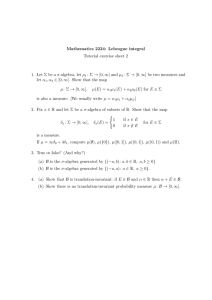
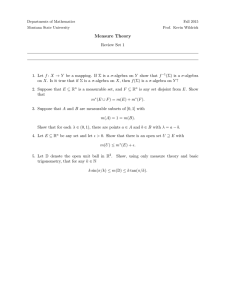
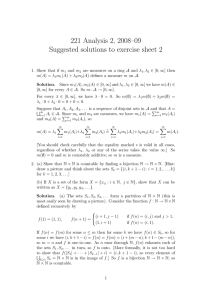
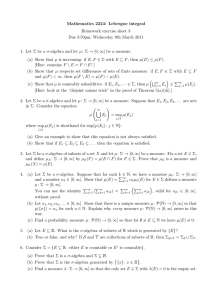

![MA2224 (Lebesgue integral) Tutorial sheet 5 [February 19, 2016] Name: Solutions](http://s2.studylib.net/store/data/010730672_1-a892ada8d0a07e1c5cf78400ac6d42a7-300x300.png)

